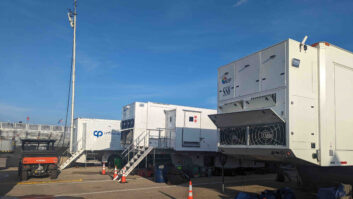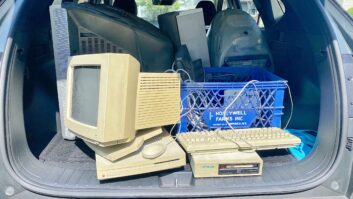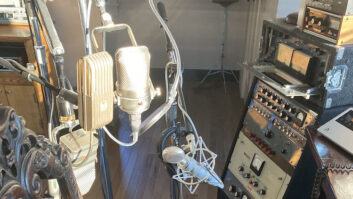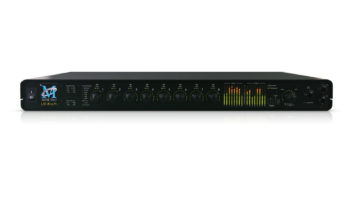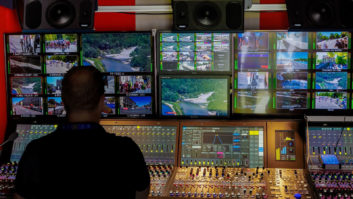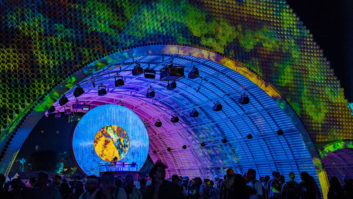
Cycling ’74’s Pluggo 3 is a vast collection of plug-ins that covers nearly every aspect of processing and synthesis, from tone generators, filters and modulators to synchronizers and routing modules. And new plug-ins are being added regularly. With more than 100 plug-ins to choose from, it’s easy to become overwhelmed each time you scroll through a pop-up menu looking for an effect or an instrument.
PLUG-IN MANAGER
To manage this wealth of plug-ins, Pluggo 3 comes with Plug-In Manager, an application that lets you assign plug-ins for a project to a specific folder. The disabled plug-ins are kept out of your insert’s pop-up window, so you have fewer items in the list to scroll through.
Plug-In Manager lets you do more than just organize your favorite effects. When I first began using Pluggo 3, I found it difficult to determine whether a plug-in was an effect or an instrument, due to the strangeness of the names. For sessions where I wouldn’t be using MIDI instruments, I created a folder that contained only effects, as well as ancillary items such as the Pluggo Bus plug-ins.
If you are using Pluggo with Steinberg Cubase (4.1 or later) or Emagic Logic, then you can create nested plug-in folders within your VSTPlugIns folder. This allows you to organize Pluggo’s effects and instruments conveniently by type or preference.
RANDOMIZE AND EVOLVE
Here’s a neat trick to try when your favorite effect begins to feel stale: Command-click anywhere on the plug-in window and the Parameter Change menu will appear. Choose Randomize All to reset most of the plug-in’s parameters to a randomly chosen value. (Some parameters, such as output gain, may not be affected.) The Randomize All feature is especially useful when you’re looking for inspiration from a parameter-rich plug-in, such as Chamberverb, which offers 16 sliders.
To change the parameters subtly, choose Evolve All, which will keep the randomization of each parameter to about 5% of the current value. By command-clicking directly on a slider, you can Randomize or Evolve that parameter only.
The Parameter Change pop-up also offers Undo Last Change, which gives you one level of undo/redo; Touch Parameters, which updates your sequencer’s automation system with any changes you’ve made to the plug-in; and Copy All From Program, which immediately calls up the parameter settings of a preset of your choice. The Parameter Change pop-up menu also works with Pluggo’s instruments, although the parameter-specific Randomize and Evolve commands are not available for instruments.
FUN WITH LFOS
If you are looking to put a little action into your Pluggo synth sounds, then try adding an LFO to one or more of its parameters. This is relatively easy to do: Just call up an LFO as an insert after the synth instrument.
In Digidesign Pro Tools, for example, put your instrument in the top insert slot of an audio track. Make sure it is receiving MIDI data by clicking on the output tile of the MIDI track and selecting the correct instrument from the pop-up window.
Just below the instrument in the audio track, add an LFO as an insert. When the LFO window appears, you can select up to three destinations for this waveform to control: Click on the arrow next to where it says “no connection,” and the pull-down menu will show you your options. If your synth is Additive Heaven, the 8-harmonic additive synthesizer that comes with Pluggo 3, your choices for LFO destinations include each of the four stages of the master envelope (attack, decay, sustain and release), each of the individual oscillator’s volume or harmonics, panning and master volume.
In order to initiate the effect after you’ve chosen your three destinations, click on the word Off and change it to Set. Next, select the LFO’s waveform (sine, square, ramp-up, ramp-down or custom); the speed of the waveform in bpm; and the note duration to which you wish to synchronize (from whole note to 1/64-note triplets). If you want to control more than three parameters of your synth, then simply add additional LFO plug-ins in the remaining insert slots. Doing this also allows you to add substantial complexity to your patch, because each new LFO can have a different tempo, waveform and control destinations. Going back to the Additive Heaven example, if your MIDI part consisted of drones, then you can have several LFOs raising and lowering individual partials at slightly different rates. Keep in mind that each LFO plug-in you add will require additional CPU time, and the more the LFO is doing, the more it will tax the CPU.
Bay Area-based sound designer Laura Pallanck wishes to thank Darwin Grosse and Gregory Taylor for the inspiration.
